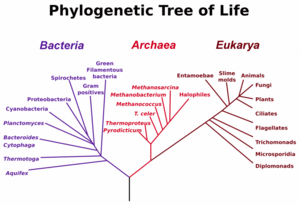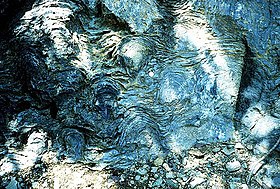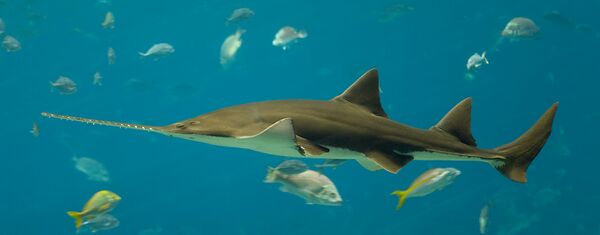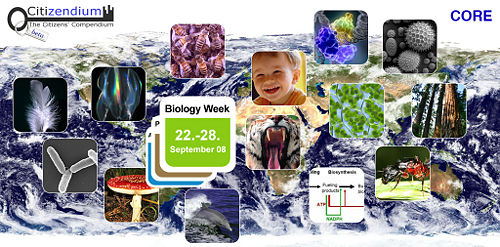User talk:Sidney Draggan
| Citizendium Editor Policy | ||
|---|---|---|
| The Editor Role | Approval Process | Article Deletion Policy |
|width=10% align=center style="background:#F5F5F5"| |}
Welcome, new editor! We're very glad you've joined us. Here are pointers for a quick start. Also, when you get a chance, please read The Editor Role. You can look at Getting Started and our help system for other introductory pages. It is also important, for project-wide matters, to join the Citizendium-L (broadcast) mailing list. Announcements are also available via Twitter. You can test out editing in the sandbox if you'd like. If you need help to get going, the forum is one option. That's also where we discuss policy and proposals. You can ask any administrator for help, too. Just put a note on their "talk" page. Again, welcome and thank you! We appreciate your willingness to share your expertise, and we hope to see your edits on Recent changes soon. --Larry Sanger 10:50, 17 April 2007 (CDT)
Organism
Organism is currently a mis-mash. I view ecolocial and evolutionary expertise as very important in shaping it in as a well reasoned, researched article. If you could drop by there some time, it would be great. And greetings from me David Tribe 17:21, 17 April 2007 (CDT)
Got your note. Glad to see you in action.David Tribe 19:53, 4 June 2007 (CDT)
Yes and your comments are indeed useful. David Tribe 23:27, 4 June 2007 (CDT)
DRAGGAN COMMENTS << >> Biologically, an organism (in Greek organon = instrument) is a complex adaptive system of components (including organs that influence each other in such a way that they function as a integrated stable unit that is able to reproduce similar progeny organisms. That is, they exhibit the attributes of living things. Simple organisms can consist of as little as one cell; nonetheless, there are many complex organisms that are multi-cellular << THIS SENTENCE, AS YET, DOES NOT MAKE SENSE TO ME >>. The distinctive features of living organisms are fully discussed in the article Life.
Microscopic organisms, generally single-celled and invisible, are the most numerous and diverse organisms on Earth; but such multicellular organisms as plants, animals, fish and fungi are more readily visible in the everyday world.
The origin of living organisms from the first communities of proto-organisms is still an unsolved scientific question, but three distinct canonical patterns of currently known organism are well established. These canonical patterns have shown up clearly in the different protein synthesis machinery present in each of the three domains of organisms - Bacteria, Archaea and Eukarya (eukaryotes).
Definitions
| The concept of living systems. See Life for a complete explanation.
A living system has the informational content and information-processing faculty to remain for a time in a near steady-state as a self-organized system of hierarchical robust modular networks. It works autonomously to offset responses to perturbations, and to reproduce itself, enabled by the influx of energy and matter and by a more than compensatory efflux of waste (disorder), thereby exploiting a far-from-equilibrium state. Finally, it is capable of participating in the transgenerational evolution of the species to which it belongs in adapting to changing environments. |
An 'organism' may be defined as an "assembly of molecules that influence each other in such a way that they function as a more or less stable whole and have properties of life." However, some sources add further conditions. For the Oxford English Dictionary, an organism is "[an] individual animal, plant, or single-celled life form." This glosses over the existence of non-animal and plant multi-cellular life forms such as some fungi and protists, as well as viruses.
Chambers Online Reference gives a broader definition: "any living structure, such as a plant, animal, fungus or bacterium, capable of growth and reproduction". The definition emphasises life; it allows for any life form, organic or otherwise, to be considered an organism, and encompasses all cellular life as well as possible synthetic life.
Viruses are often not considered to be organisms because they are not cells, and are incapable of independent reproduction, metabolism, and in particular, do not posses the machinery to make proteins. Some cellular parasites and endosymbionts are also incapable of independent life. Viruses are however able to evolve by natural selection and do posses genetic material, which can be either RNA or DNA.
Tibor Gánti's chemoton is an abstract model for a minimum living organism introduced in 1971. Its characteristics are separation, metabolism, replication, information-storage, and an autocathalytic subsystem.
The word 'organism' usually describes an independent collections of systems (for example circulatory system or digestive system) that are themselves collections of organs; these are, in turn, collections of tissues, made of cells. The concept of an organism can be challenged on grounds that organisms are never truly independent of an ecosystem; groups or populations of organisms function in an ecosystem in a manner not unlike multicellular tissues in an organism; when organisms enter into strict symbiosis, they are not independent. Symbiotic plant and algae relationships consist of radically different DNA structures between contrasting groups of tissues, sufficient to recognize their reproductive independence. However, in a similar way, an organ within an 'organism' (say, a stomach) can have an independent and complex interdependent relationship to separate whole organisms, or groups of organisms (a population of viruses, or bacteria), without which the organ's stable function would transform or cease. Other organs within that system (say, the ribcage) might be affected only indirectly by such an arrangement, much as species affect one another indirectly in an ecosystem. Thus all living matter exists within larger heterarchical systems of life, made of wide varieties of transient living and dead tissues, and functioning in complex, dynamic relationships to one another.
Superorganism
A superorganism is an organism that consists of many organisms. This is usually meant to be a social unit of eusocial animals, where division of labour is specialised and where individuals cannot survive by themselves for long. Ants are the best known example of a superorganism. Thermoregulation, a feature usually exhibited by individual organisms, does not occur in individuals or small groups of honeybees of the species Apis mellifera. When these bees pack together in clusters of between 5000 and 40000, the colony can thermoregulate.[1]
The concept of superorganism is disputed, as many biologists maintain that, for a social unit to be considered an organism by itself, the individuals should be in permanent physical connection to each other, and its evolution should be governed by selection to the whole society instead of individuals. While it's generally accepted that the society of eusocial animals is a unit of natural selection to at least some extent, most evolutionary biologists claim that the individuals are still the primary units of selection.
The question remains "What is to be considered the individual?" E.O. Wilson has shown that with ant-colonies and other social insects it is the breeding entity of the colony that is selected, not its individual members. This could apply to the bacterial members of a stromatolite, which, because of genetic sharing, comprises a single gene pool.
It can also be argued that humans are a superorganism that includes microorganisms such as bacteria. The human intestinal microbiota is composed of 1013 to 1014 microorganisms whose collective genome ('microbiome') contains at least 100 times as many genes as our own. Thus, humans are superorganisms whose metabolism is an amalgamation of microbial and human attributes. [2].
Organizational terminology
All organisms are classified by alpha taxonomy into taxa or clades. Taxa are ranked groups of organisms which run from the general (domain) to the specific (species). A broad scheme of ranks is:
For example, Homo sapiens is the Latin binomial for modern humans. All members of the species sapiens can, in theory, interbreed. Several species may belong to a genus, but different species within a genus cannot interbreed to produce fertile offspring. Homo only has one surviving species (sapiens); Homo erectus, Homo neanderthalensis etc. having become extinct long ago. Several genera belong to the same family and so on up the hierarchy. Eventually, the relevant kingdom (Animalia, in the case of humans) is placed into one of the three domains depending upon certain genetic and structural characteristics. All living organisms are classified by this system such that the species in a particular family are more genetically similar than the species within a particular phylum.
Structure
All organisms consist of monomeric units called cells; some contain a single cell (unicellular), others contain many (multicellular). Multicellular organisms are able to specialise cells to perform specific functions, a group of such cells is tissue the four basic types of which are epithelium, nervous tissue, muscle tissue and connective tissue. Several types of tissue work together in the form of an organ to produce a particular function (such as the pumping of the blood by the heart. This pattern continues to a higher level with several organs functioning as an organ system to allow for reproduction, digestion etc. Many multicelled organisms comprise of several organ systems which coordinate to allow for life.
The cell
The cell theory, developed in 1839 by Schleiden and Schwann, states that all organisms are composed of one or more cells; all cells come from preexisting cells; all vital functions of an organism occur within cells, and cells contain the hereditary information necessary for cell functions and for transmitting information to the next generation of cells. There are two types of cells, eukaryotic and prokaryotic. Prokaryotic cells are usually singletons, while eukaryotic cells are usually found in multi-cellular organisms. Prokaryotic cells lack a nuclear membrane so DNA is unbound within the cell, eukaryotic cells have nuclear membranes. All cells have a membrane, which envelopes the cell, separates its interior from its environment, regulates what moves in and out, and maintains the electric potential of the cell. Inside the membrane, a salty cytoplasm takes up most of the cell volume. All cells possess DNA, the hereditary material of genes, and RNA, containing the information necessary to build various proteins such as enzymes, the cell's primary machinery. There are also other kinds of biomolecules in cells.
All cells share several abilities[3]:
- Reproduction by cell division (binary fission, mitosis or meiosis).
- Use of enzymes and other proteins coded for by DNA genes and made via messenger RNA intermediates and ribosomes.
- Metabolism, including taking in raw materials, building cell components, converting energy, assembling molecules and releasing by-products. The functioning of a cell depends upon its ability to extract and use chemical energy stored in organic molecules. This energy is derived from metabolic pathways.
- Response to external and internal stimuli such as changes in temperature, pH or nutrient levels.
- Cell contents are contained within a cell surface membrane that contains proteins and a lipid bilayer.
Evolution

In biology, current theories of early evolution propose that organisms alive today are descended from a common ancestral gene pool. Evidence for common origins can be found in the traits that are common to all living organisms. In Darwin's day, the evidence of shared traits was based on observation of morphologic similarities, such as the fact that all birds have wings, even those which do not fly. Today, there is evidence from genetics that all organisms have a shared ancestry in ancient communities of microbes.
Early organisms may have shared their components more widely than existing organisms. Recent research indicates this early ancestry represents a stage in evolution in which representation of evolution as different organism lineages represented by branching (bifurcating) trees is misleading, and the earliest living communities may well have shared their genes extensively.
Every living cell uses nucleic acids as its genetic material, and uses the same twenty amino acids as the building blocks for its proteins. All organisms use the same genetic code (with some extremely rare and minor deviations) to translate nucleic acid sequences into proteins. These features are thought to have been shared by the ancestral gene pool.[4]
History of life
The chemical evolution from self-catalytic chemical reactions to life (see Origin of life) is not a part of biological evolution, but it is unclear at which point such increasingly complex sets of reactions became what we would consider, today, to be living organisms.

All existing organisms share certain traits, including cellular structure and genetic code. Most scientists interpret this to mean all existing organisms share a common ancestor, which had already developed the most fundamental cellular processes, but there is no scientific consensus on the relationship of the three domains of life (Archaea, Bacteria, Eukaryota) or the origin of life. Attempts to shed light on the earliest history of life generally focus on the behavior of macromolecules, particularly RNA, and the behavior of complex systems. The emergence of oxygenic photosynthesis (around 3 billion years ago) and the subsequent emergence of an oxygen-rich, non-reducing atmosphere can be traced through the formation of banded iron deposits, and later red beds of iron oxides. This was necessary for the development of aerobic cellular respiration, believed to have emerged about 2 billion years ago. In the last billion years, simple multicellular plants and animals began to appear in the oceans. Soon after, the Cambrian explosion (a brief period of remarkable organismal diversity documented in the fossils found at the Burgess Shale) saw the creation of all the major body plans, or phyla of modern animals. This event is believed to have been triggered by the development of Hox genes. About 500 million years ago, plants and fungi colonized the land, soon followed by arthropods and other animals, leading to the development of land ecosystems.
Ecology
A principle of ecology is that each organism has an ongoing relationship with every other element in its environment. An ecosystem is any situation where there is interaction between organisms and their environment, and is composed of the entirety of life, the biocoenosis and the medium that life exists in the biotope. Within the ecosystem, species are connected and depend upon one another in the food chain, and exchange energy and matter between themselves and with their environment. The concept of an ecosystem can apply to units of variable size, such as a pond, a field, or a piece of deadwood. A unit of smaller size is called a microecosystem. For example, an ecosystem can be a stone and all the life beneath it, a mesoecosystem could be a forest, and a macroecosystem a whole ecoregion, with its drainage basin. In an ecosystem, the connections between species are generally related to their place in the food chain. There are three categories of organisms:
- Producers -- usually plants which are capable of photosynthesis but could be other organisms such as bacteria around ocean vents that are capable of chemosynthesis.
- Consumers -- animals, which can be primary consumers (herbivorous), or secondary or tertiary consumers (carnivorous).
- Decomposers -- bacteria, mushrooms which degrade organic matter of all categories, and restore minerals to the environment.
These relations form food chains with fewer organisms at each higher level of the chain. These concepts lead to the idea of biomass (the total living matter in a given place),of primary productivity (the increase in the mass of plants during a given time) and of secondary productivity (the living matter produced by consumers and the decomposers in a given time).
References
- ↑ Southwick, EE (1983). "The honey bee cluster as a homeothermic superorganism" (PDF). Comp Bioch Physiol 75A (4): 741–745. DOI:10.1016/0300-9629(83)90434-6. Retrieved on 2006-07-20. Research Blogging.
- ↑ Gill SR et al (2006)Science 312:1355-9 [1]
- ↑ The Universal Features of Cells on Earth in Chapter 1 of Molecular Biology of the Cell fourth edition, edited by Bruce Alberts (2002) published by Garland Science.
- ↑ Woese C (2002) On the evolution of cells. Proc Natl Acad Sci USA 99:8742-7 PMID 12077305 This article shifts the emphasis in early phylogenic adaptation from vertical to horizontal gene transfer. (Open access.)
- Esser C et al. (2004) A genome phylogeny for mitochondria among alpha-proteobacteria and a predominantly eubacterial ancestry of yeast nuclear genes. Mol Biol Evol 21:1643-50 PMID 15155797
- Forterre P (2006) Three RNA cells for ribosomal lineages and three DNA viruses to replicate their genomes: A hypothesis for the origin of cellular domain. PNAS 103:3669-3674
- Rivera MC, Lake JA (2004) The ring of life provides evidence for a genome fusion origin of eukaryotes. Nature 431:152-5 PMID 15356622
- Simonson AB et al. (2005) Decoding the genomic tree of life. Proc Natl Acad Sci USA 102 Suppl 1:6608-13 PMID 15851667
External links
- BBCNews: 27 September, 2000, When slime is not so thick Citat: "...It means that some of the lowliest creatures in the plant and animal kingdoms, such as slime and amoeba, may not be as primitive as once thought...."
- SpaceRef.com, July 29, 1997: Scientists Discover Methane Ice Worms On Gulf Of Mexico Sea Floor
- The Eberly College of Science: Methane Ice Worms discovered on Gulf of Mexico Sea Floor download Publication quality photos
- Artikel, 2000: Methane Ice Worms: Hesiocaeca methanicola. Colonizing Fossil Fuel Reserves
- SpaceRef.com, May 04, 2001: Redefining "Life as We Know it" Hesiocaeca methanicola In 1997, Charles Fisher, professor of biology at Penn State, discovered this remarkable creature living on mounds of methane ice under half a mile of ocean on the floor of the Gulf of Mexico.
- SpaceRef.com, July 29, 1997: Scientists Discover Methane Ice Worms On Gulf Of Mexico Sea Floor
- BBCNews, 18 December, 2002, 'Space bugs' grown in lab Citat: "...Bacillus simplex and Staphylococcus pasteuri...Engyodontium album...The strains cultured by Dr Wainwright seemed to be resistant to the effects of UV - one quality required for survival in space...."
- BBCNews, 19 June, 2003, Ancient organism challenges cell evolution Citat: "..."It appears that this organelle has been conserved in evolution from prokaryotes to eukaryotes, since it is present in both,"..." See Seufferheld M et al. (2003) Identification of organelles in bacteria similar to acidocalcisomes of unicellular eukaryotes. J Biol Chem. 278:29971-8. PMID 12783865
- Interactive Syllabus for General Biology - BI 04, Saint Anselm College, Summer 2003
- Jacob Feldman: Stramenopila
- NCBI Taxonomy entry: root (rich)
- Saint Anselm College: Survey of representatives of the major Kingdoms Citat: "...Number of kingdoms has not been resolved...Bacteria present a problem with their diversity...Protista present a problem with their diversity...",
- Species 2000 Indexing the world's known species. Species 2000 has the objective of enumerating all known species of plants, animals, fungi and microbes as the baseline dataset for studies of global biodiversity.
- The largest organism in the world may be a fungus carpeting nearly 10 square kilometers of an Oregon forest, and may be as old as 8500 years.
- The Tree of Life.
Please join us for Biology Week!
|
Hello Sidney, I am giving you this personal invitation to join us this week for Biology Week! Please join us on the wiki and add or edit biology articles. Also, please let your friends and colleagues who are biologists, biology students, or naturalists, know about Biology Week and ask them to join us, too. Any way you can help make it an event would be most welcome. Think of it as a Biology Workgroup open house. Let's see if we can kick up activity a notch! Thanks in advance! --Larry Sanger 12:19, 22 September 2008 (CDT) |
Returning to Citizendium: an update on the project and how to get involved
Hello - some time ago you became part of the Citizendium project, but we haven't seen you around for a while. Perhaps you'd like to update your public biography or check on the progress of any pages you've edited so far.
Citizendium now has over 16,000 articles, with more than 150 approved by specialist Editors such as yourself, but our contributor numbers require a boost. We have an initiative called 'Eduzendium' that brings in students enrolled on university courses to write articles for credit, but we still need more Editors across the community to write, discuss and approve material. There are some developed Biology articles that could be improved and approved, and some high-priority articles that we don't have yet. You can also create new articles via this guide, and contribute to some Biology pages that have been recently edited - or to any others on Citizendium, since you're a general Author as well as a specialist Editor. You may like to contribute to discussions in the forums, and might consider running for an elected position on the Management and Editorial Councils that oversee the project.
If you have any questions, let me know via my Talk page or by leaving a message below this one. Thank you for signing up and reading this update; I hope that you will look in on our community soon. John Stephenson 13:16, 19 November 2011 (UTC)

